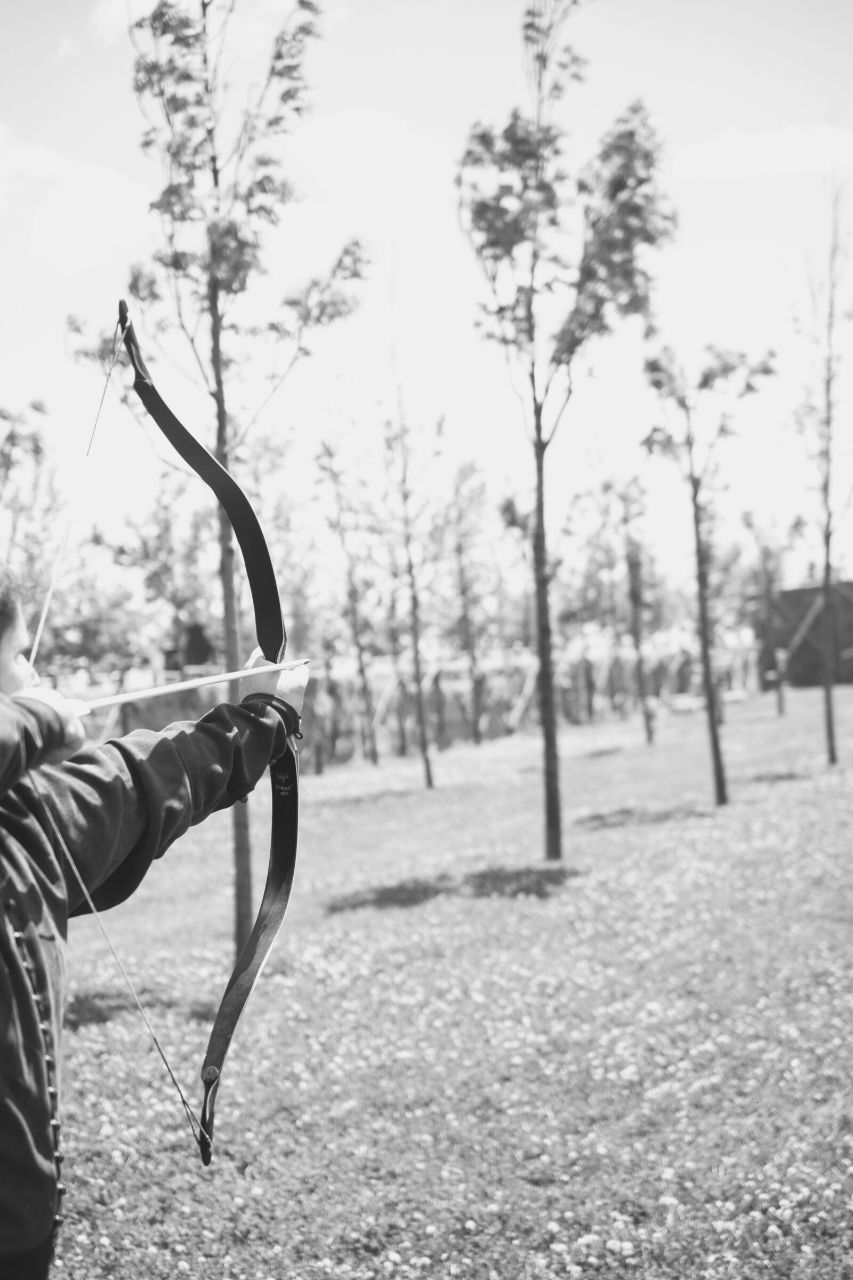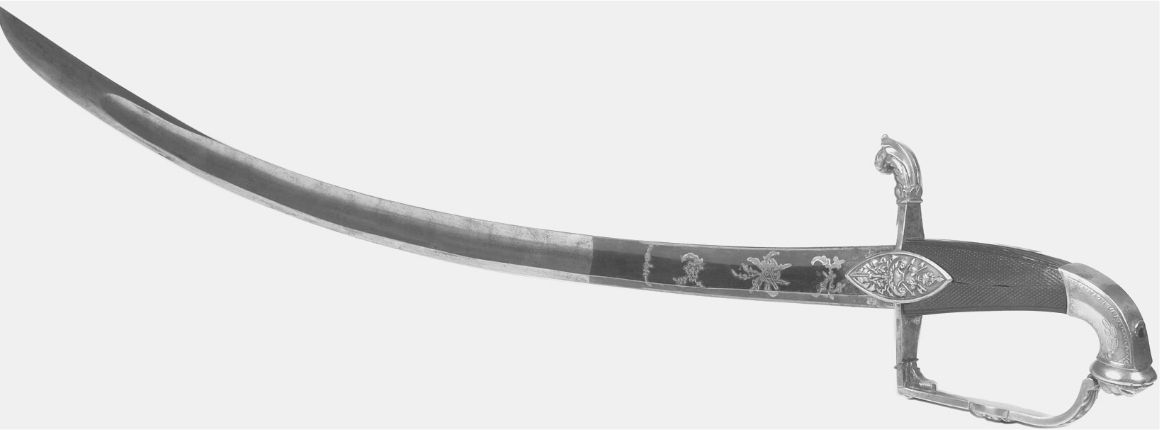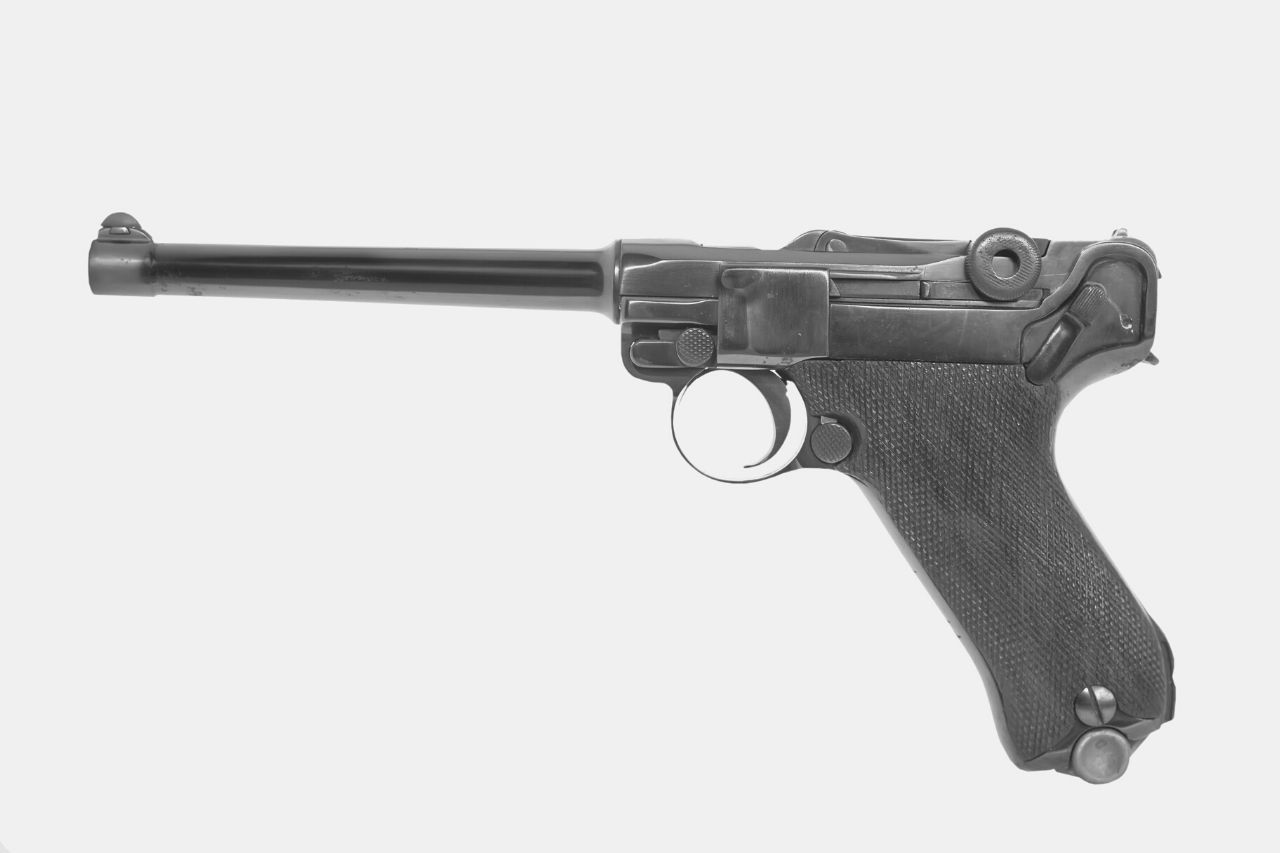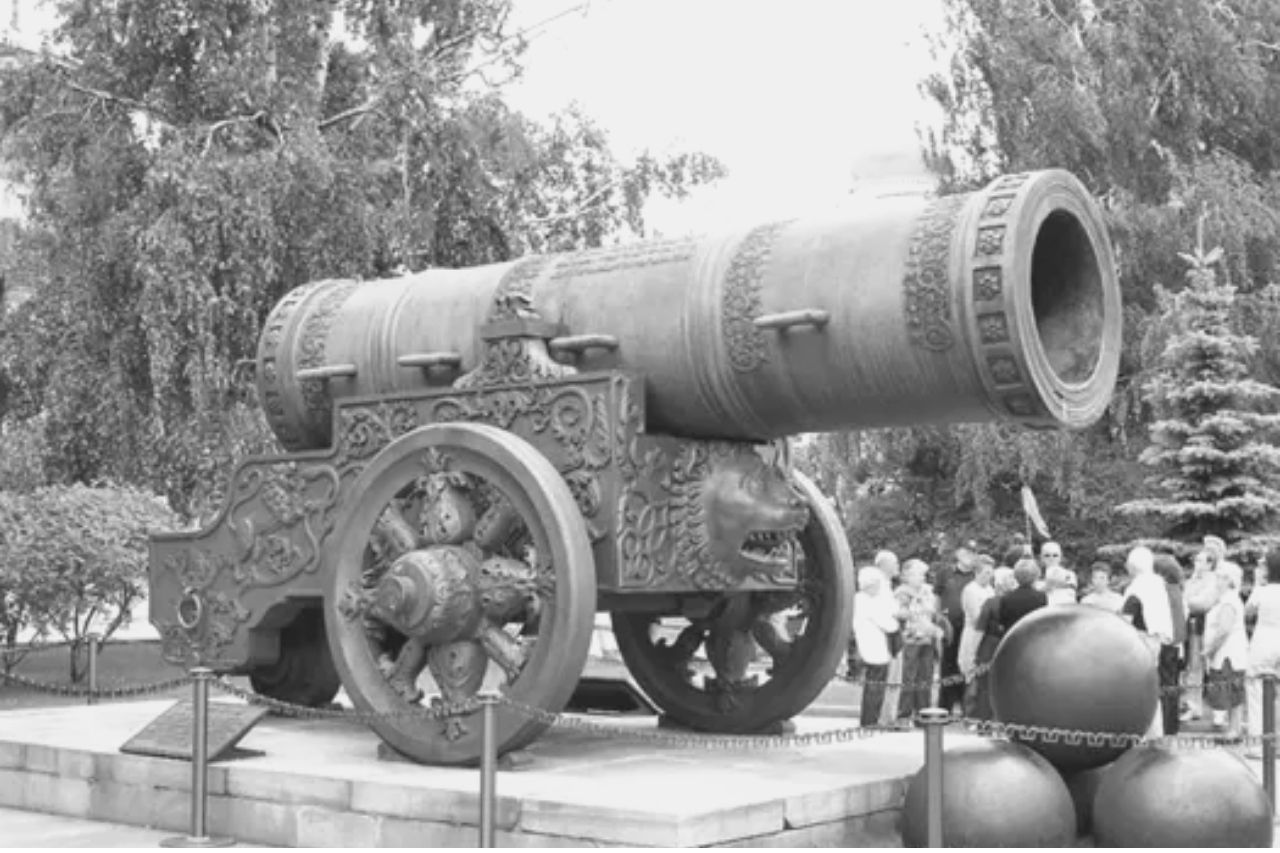Ottoman Weapons: Top Most Powerful Weapons of the Ottoman Empire
There are a wide variety of Ottoman weapons used by the army forces of the Ottoman Empire throughout the centuries, including swords, bows, guns, rifles, artillery, and firearms.
Aside from their own handmade weapons, the Ottoman government shifted to buying material and ready firearms and artillery weapons directly from foreign companies to prepare for the war.
Below, we will share detailed information about the weapons, as obtained from our expert archaeologist. We will further categorize them and discuss in-depth the striking unique features that make them powerful and war-ready.
Weapons Used by the Ottoman Army
Ottoman Mace
Turkish bow
The Kilij
The Yatagan
Ottoman bombards
Mauser Parabellum
Ottoman Cannon
Dardanelles Gun
The Ottoman Empire's weapons: Unique Features of the Original Ottoman Weapons
Turkish bow
One of the earliest Ottoman weapons was the Turkish bow, currently one of the shortest bows in history. The Turks crafted the most potent and sophisticated bows of the ancient world. The famous Turkish bow became the pride of the Ottoman Empire and was often fired from horseback. The bow had short limbs that gave it superior power when shooting lighter arrows over a long distance. Its unique outward-bulging grip made it more comfortable to hold for archers.
They used Asiatic wooden cores, placing a horn on the belly and sinew on the back. The Turkish bow had the most extreme curvature; thus, the outer limbs would curve forward in a “C” shape and overlap when unstrung. Turkish archers often used a thumb draw to operate their bows and wore a thumb ring to protect the digit and help with the draw.
This Ottoman weapon continued to play an important role in land and sea battles through into the 16th century. However, warriors slowly lost the skill of firing it from a galloping horse. At some point, the Ottomans adopted the crossbow for use in fortresses. In the early 17th century, the ‘Laws of the Janissaries’ illustrates that the Janissary officers still maintained a stock of these weapons.
The Yatagan – Turkish sword
Another mighty weapon used by the Turks was the Yatagan, commonly called the Turkish sword. This is a type of Ottoman knife used between the mid-16th and the late 19th centuries. Yatagans are 60 to 80 centimeters long (24 to 31.5 inches), holding a single-edged, slightly curved blade and an ivory hilt.
The Yatagan sword was majorly used in the Ottoman army and navy for the Janissaries, making it a signature weapon for the corps. Named after the Yatagan town in southwest Turkey, the sword was smaller and lighter than ordinary swords; thus, they efficiently carried it at the waist on the march.
The Kilij
The Kilij, on the other hand, is a specific type of saber associated with the Ottoman Turks, originating in Central Asia. It was discovered in the late 15th century. It is characterized by a long blade curving slightly from the hilt and firmly into the distal half.
The Asian Turks began using curved cavalry swords from the late Hsiung-Nu period. It was a one-handed saber with a curvature small enough to cut and thrust effectively. The Yalman is a sharpened back-edge at the final section of the blade.
Flanged mace
An Ottoman flanged mace, also used in the Ottoman Empire, is a weapon whose head is composed of six heavy section-shaped flanges, a steel shaft with silver bullion trim orders, and domed terminals. It was blunt with no sharp edges to avoid getting caught or stuck in their opponents’ plating. In most cases, these delicately crafted maces were not battle weapons but a symbol of command in the Ottoman army.
The Ottoman musket
The Ottoman musket is also a weapon that the Turks used in the 16th century. It is a muzzle-loaded long gun that resembles a smoothbore weapon. It was initially a heavier variant of the arquebus, able to penetrate heavy armor. However, by the mid-16th century, this musket was faced out as heavy armor declined. The Turkish armies were well equipped with matchlock muskets, later replaced in the late 17th century with those flintlocks that used miquelet mechanisms.
Ottoman Weapons: Most Powerful Firearms and Artilleries Used by the Ottoman Army
The Mauser Parabellum was one of the most used models in Turkey. It was a semi-automatic self-loading pistol manufactured by the Deutsche Waffen und MunitionsFabrik. The pistol was fed by a 10-round fixed magazine and calibrated at 9 millimeters (0.4 inches).
The 1896 model was the widely used version characterized by a magazine forward of the trigger. Additionally, it had a broom-shaped handle and a long protruding barrel. The Mauser Parabellum measured 288 millimeters (11.3 inches), with an unloaded weight of 1100 grams (2425 pounds). This pistol had an effective shot range of 500 meters or 1640.4 feet.
The Ottoman Mauser rifle was later modernized into an M1903 Mauser bolt-action rifle. This weapon effectively ranged up to 600 meters, or 1968.5 feet, and utilized a five-round removable box magazine. It was issued to the Ottoman Empire army’s best front-line infantry units.
The enormous Ottoman cannon is another powerful weapon used for wars by the Ottoman army. One fascinating fact about these cannons is that it was as big as a colossal size, at the time! It weighed 19 tons with a 75-centimeter caliber (29.5 inches), meaning it could project huge rocks weighing up to 600 kilograms (1322.8 pounds) to a distance over two kilometers or 1.2 miles. However, they had to test it before taking it off its building location.
It was done by 60 oxen and 400 men, who also had to prepare a floor to support such immense weight. The cannon was loaded with gunpowder at the testing place, and a large spherical rock projected over 1500 meters (4921 feet) away and immersed almost two meters (6.5 feet) deep!
The machine guns were grouped in four-gun batteries. Famous for their martial prowess, firearms rolled in gradually to the Ottoman Empire. The cannon was among the first Ottoman artillery. Every Ottoman infantry division was supposed to be supported by six batteries; however, they had to work with three or four at most. The 75-millimeter (3 inches) guns had a range of 6000 meters (19685 feet).
The weapons were purchased from Germany before the First World War; however, many were lost in the Balkan Wars. After 1916, Germany supplied the Turks with a good number of both machine guns.
The effectiveness of this gun was impressive. It was perhaps why the Ottomans concentrated on producing massive cannons for the rest of the century. Despite inflicting significant damage, the cannons had two significant drawbacks. First, the heat generated by a single shot limited the number of firings in a day. Second, its enormous weight and size made it impossible to move it to a different section of the defenses once it was in place.
Then there was the Ottoman Bombard, famously called the Dardanelles Gun. This fascinating Ottoman machine gun is probably the most distinctive Ottoman artillery piece due to its enormous size. The bombards entered the Ottoman Empire from Europe in the 14th century and remained in service to the 19th century.
You wouldn’t help but notice these interesting wrought-iron bared cannons that weighed upwards of 6000-16000 kilograms (13227-35274 pounds), capable of firing up to 700 kilograms (1543 pounds) of stones.
Ottoman’s bombard cannons were indispensable to siege warfare, and, in most cases, victory would not be possible without them. The bombards were surprisingly large that they were often cast on-site before sieges using raw materials ferried by the Ottoman forces. The bombards mainly destroyed walls, fortresses, and other defensive structures. Thus, they were often placed high up on hills and artificial structures to maximize the damage potential and range.
Did you know that the mighty Ottoman bombards were best known for their role in siege warfare? Well, the Ottoman Empire’s utilization of the bombard cannons indicates the transition from traditional to gunpowder weaponry. During the empire’s multitude of campaigns throughout Europe, the Ottomans were exposed to adopted and refined artillery use.
For them, the transition to gunpowder weaponry represented advancement in military technology and an increased rate of inter-cultural re-encounters between the Balkan states and the Ottoman Empire, instigating new techniques that Ottoman forces used to conduct warfare.
Another powerful pistol used by Turkish officers was the Browning, produced by the Fabrique Nationale under the U.S. manufacturer Browning’s patent. The 205 millimeter-long (8 inches) pistol was a semi-automatic pistol with black plastic grips. Additionally, it had a seven-shot magazine and a rear grip safety catch.
Turkish infantry used two kinds of grenades. The most common offensive grenade was the German stick grenade, weighing half a kilogram; it had a fuse length of 4.2 seconds and could be used at an effective range of 10 meters (33 feet). Other defensive grenades also used by the infantry troops were “ball” and “egg” shaped.
Conclusions
Now that you have read about the different Ottoman Empire guns, you might understand why there were considered the largest, longest-lasting, and most successful empires in the world’s history. Let’s go over the main key points we have discussed today.
The Ottomans originally only made handmade weapons.
They later embarked on importing heavier, more powerful war machines.
Most of the machines were obtained in readiness for World War I.
The modernization of Ottoman weapons was an immense investment of the Ottoman Empire.
The Ottoman cannon was the biggest weapon in the Ottoman Empire at the time.
The Ottoman flanged mace, Turkish bow, Kilij, and Yatagan were handmade in Turkey.
The bigger and more powerful weapons like the Ottoman bombards, Mauser Parabellum, Ottoman Cannon, and Dardanelles Gun were often imported.
The Ottoman Empire had potent weapons in order to protect its empire from invading countries. From making only handmade weapons to creating fascinating Ottoman machine guns like the Dardanelles Gun. They were able to create mighty weapons to use during World War I. The Ottoman Empire was indeed as successful as it was, with its very strong and organized military and centralized political structure.













